
Aerospace and defense company Boeing (NYSE:BA) reported revenue ahead of Wall Streets expectations in Q3 CY2025, with sales up 30.4% year on year to $23.27 billion. Its non-GAAP loss of $7.47 per share was significantly below analysts’ consensus estimates.
Is now the time to buy Boeing? Find out by accessing our full research report, it’s free for active Edge members.
Boeing (BA) Q3 CY2025 Highlights:
- Revenue: $23.27 billion vs analyst estimates of $21.9 billion (30.4% year-on-year growth, 6.3% beat)
- Adjusted EPS: -$7.47 vs analyst estimates of -$2.38 (significant miss)
- Adjusted EBITDA: -$4.20 billion vs analyst estimates of -$560.1 million (-18.1% margin, significant miss)
- Operating Margin: -20.5%, up from -32.3% in the same quarter last year
- Free Cash Flow was $238 million, up from -$1.96 billion in the same quarter last year
- Backlog: $635.7 billion at quarter end
- Sales Volumes rose 37.9% year on year (10.5% in the same quarter last year)
- Market Capitalization: $168.9 billion
"With a sustained focus on safety and quality, we achieved important milestones in our recovery as we generated positive free cash flow in the quarter and jointly agreed with the FAA in October to increase 737 production to 42 per month," said Kelly Ortberg, Boeing president and chief executive officer.
Company Overview
One of the companies that forms a duopoly in the commercial aircraft market, Boeing (NYSE:BA) develops, manufactures, and services commercial airplanes, defense products, and space systems.
Revenue Growth
Reviewing a company’s long-term sales performance reveals insights into its quality. Any business can put up a good quarter or two, but the best consistently grow over the long haul. Regrettably, Boeing’s sales grew at a tepid 5.9% compounded annual growth rate over the last five years. This was below our standard for the industrials sector and is a rough starting point for our analysis.
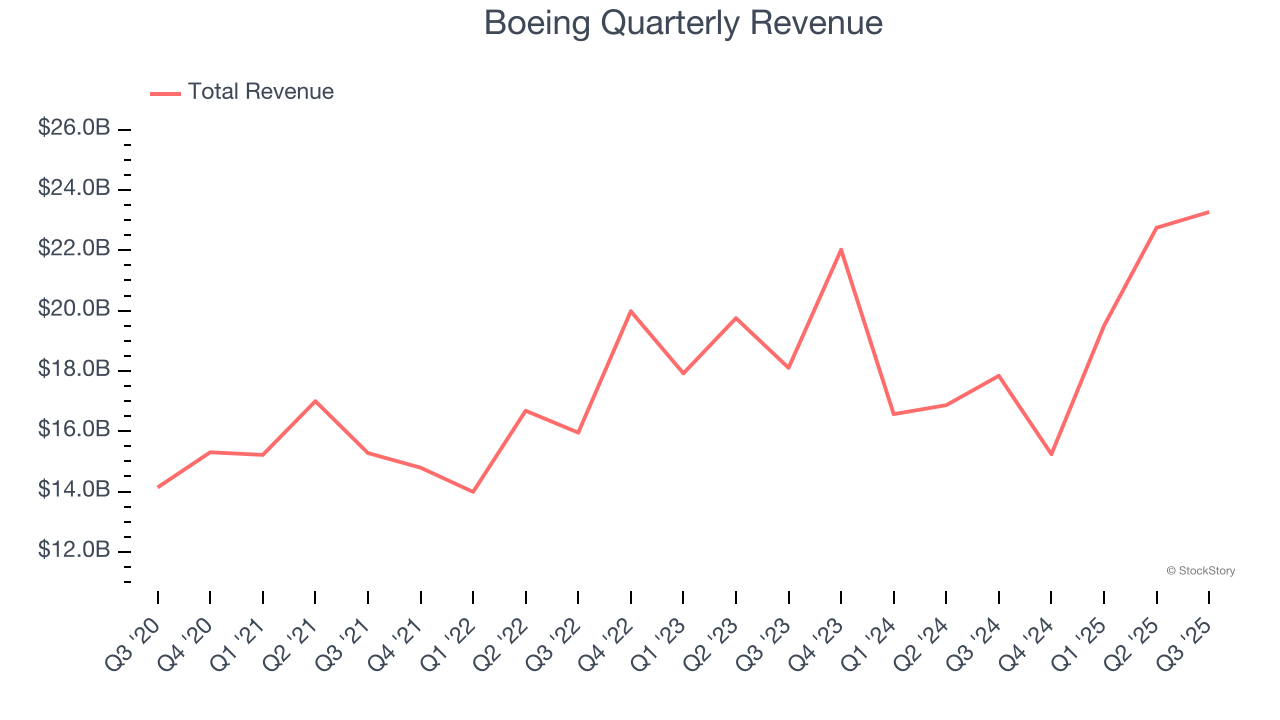
We at StockStory place the most emphasis on long-term growth, but within industrials, a half-decade historical view may miss cycles, industry trends, or a company capitalizing on catalysts such as a new contract win or a successful product line. Boeing’s recent performance shows its demand has slowed as its annualized revenue growth of 3.2% over the last two years was below its five-year trend. 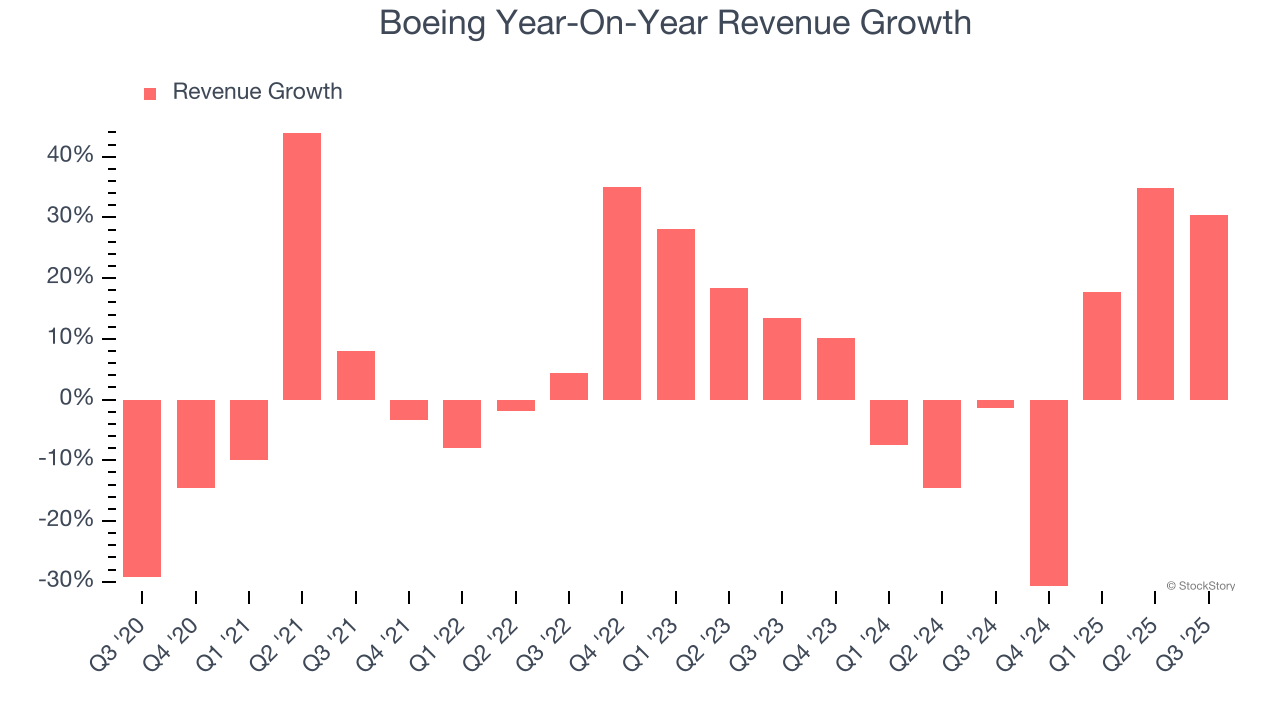
We can better understand the company’s revenue dynamics by analyzing its number of units sold, which reached 160 in the latest quarter. Over the last two years, Boeing’s units sold averaged 4.9% year-on-year growth. Because this number is better than its revenue growth, we can see the company’s average selling price decreased. 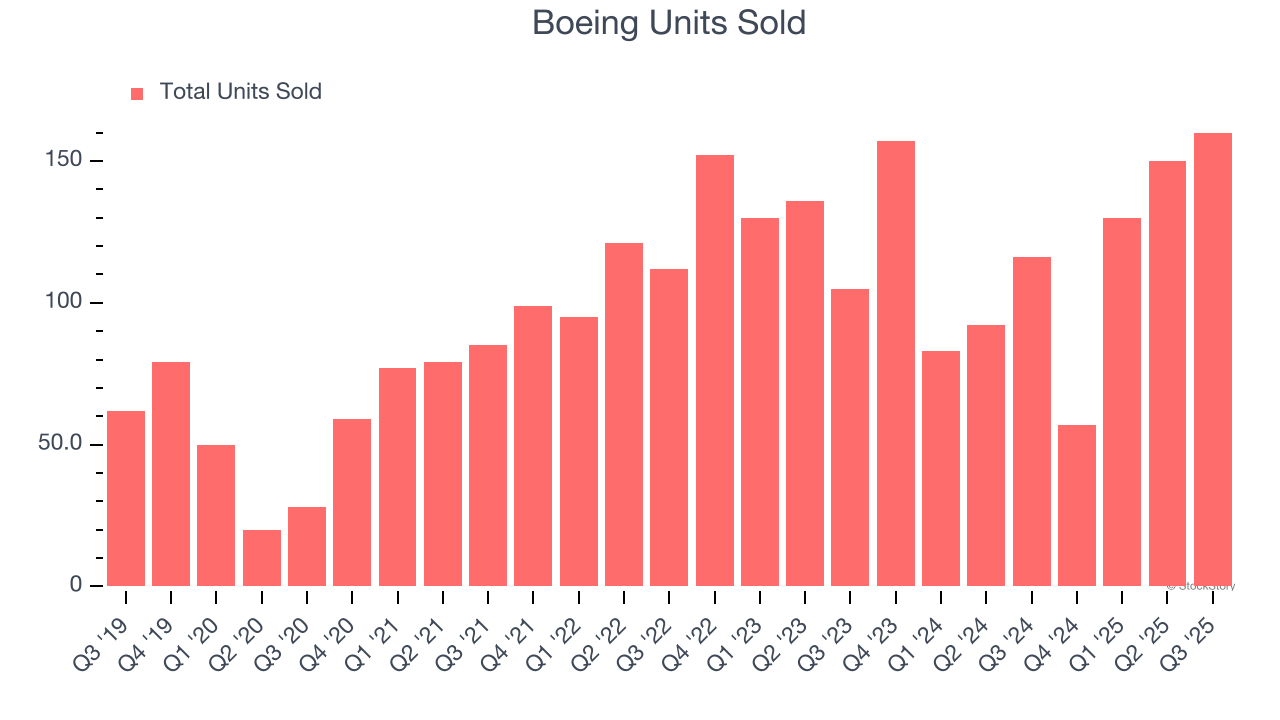
This quarter, Boeing reported wonderful year-on-year revenue growth of 30.4%, and its $23.27 billion of revenue exceeded Wall Street’s estimates by 6.3%.
Looking ahead, sell-side analysts expect revenue to grow 15.2% over the next 12 months, an improvement versus the last two years. This projection is eye-popping for a company of its scale and implies its newer products and services will spur better top-line performance.
Today’s young investors won’t have read the timeless lessons in Gorilla Game: Picking Winners In High Technology because it was written more than 20 years ago when Microsoft and Apple were first establishing their supremacy. But if we apply the same principles, then enterprise software stocks leveraging their own generative AI capabilities may well be the Gorillas of the future. So, in that spirit, we are excited to present our Special Free Report on a profitable, fast-growing enterprise software stock that is already riding the automation wave and looking to catch the generative AI next.
Operating Margin
Operating margin is a key measure of profitability. Think of it as net income - the bottom line - excluding the impact of taxes and interest on debt, which are less connected to business fundamentals.
Boeing’s operating margin might fluctuated slightly over the last 12 months but has remained more or less the same, averaging negative 8.6% over the last five years. Unprofitable industrials companies that fail to improve their losses or grow sales rapidly deserve extra scrutiny. For the time being, it’s unclear if Boeing’s business model is sustainable.
Analyzing the trend in its profitability, Boeing’s operating margin might fluctuated slightly but has generally stayed the same over the last five years. This raises questions about the company’s expense base because its revenue growth should have given it leverage on its fixed costs, resulting in better economies of scale and profitability.
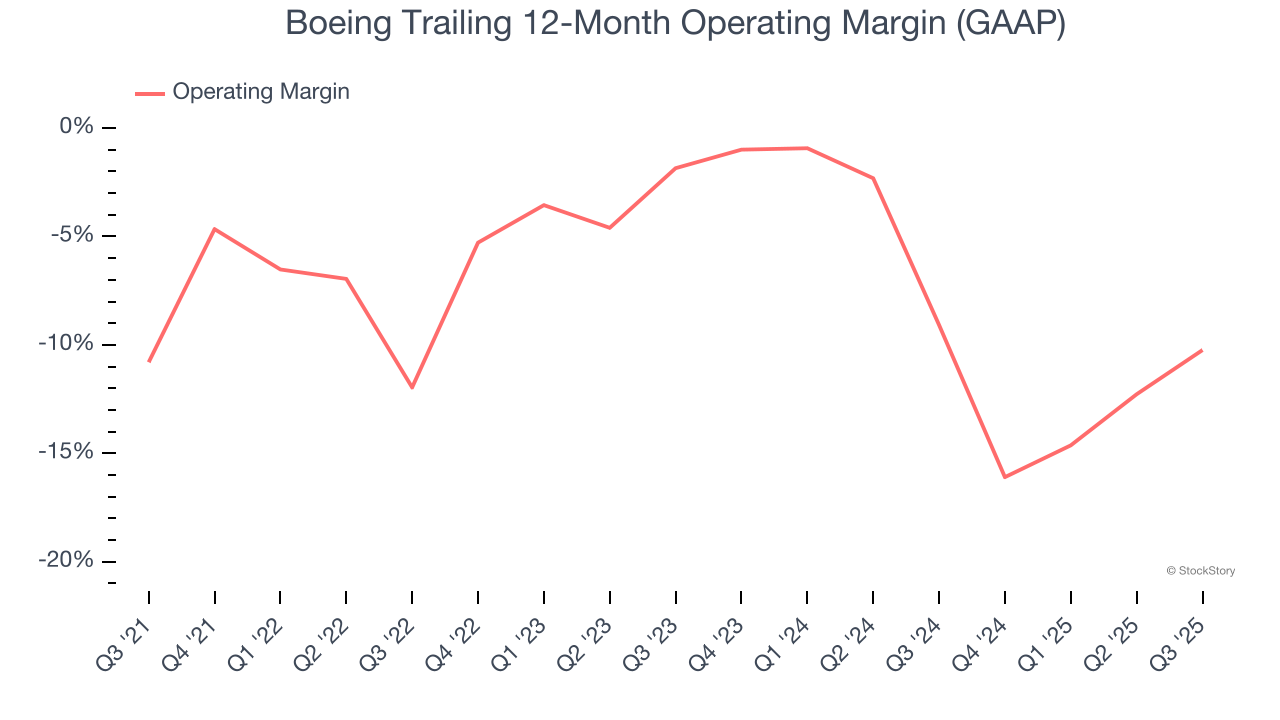
This quarter, Boeing generated a negative 20.5% operating margin. The company's consistent lack of profits raise a flag.
Earnings Per Share
We track the long-term change in earnings per share (EPS) for the same reason as long-term revenue growth. Compared to revenue, however, EPS highlights whether a company’s growth is profitable.
Boeing’s earnings losses deepened over the last five years as its EPS dropped 7.8% annually. We tend to steer our readers away from companies with falling EPS, where diminishing earnings could imply changing secular trends and preferences. If the tide turns unexpectedly, Boeing’s low margin of safety could leave its stock price susceptible to large downswings.
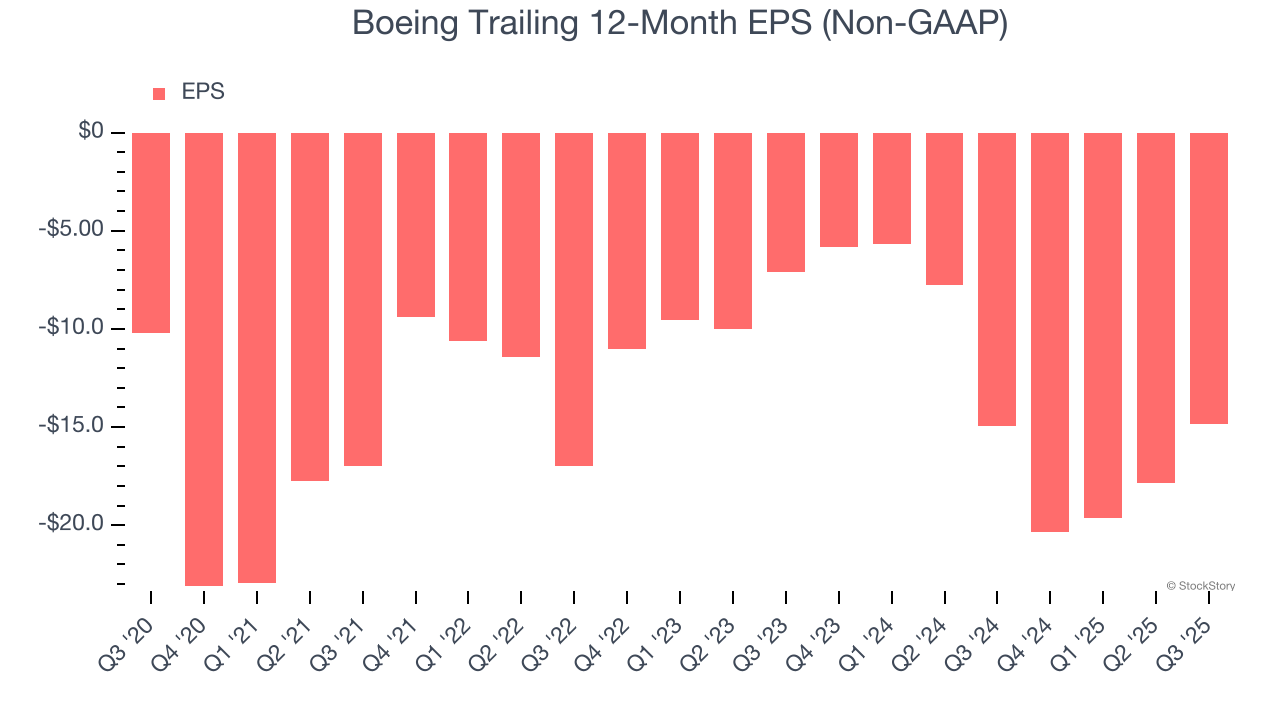
Like with revenue, we analyze EPS over a more recent period because it can provide insight into an emerging theme or development for the business.
For Boeing, its two-year annual EPS declines of 44.7% show it’s continued to underperform. These results were bad no matter how you slice the data.
In Q3, Boeing reported adjusted EPS of negative $7.47, up from negative $10.44 in the same quarter last year. Despite growing year on year, this print missed analysts’ estimates. Over the next 12 months, Wall Street is optimistic. Analysts forecast Boeing’s full-year EPS of negative $14.87 will flip to positive $2.14.
Key Takeaways from Boeing’s Q3 Results
We were impressed by how significantly Boeing blew past analysts’ revenue expectations this quarter. On the other hand, its EBITDA missed and its EPS fell short of Wall Street’s estimates. Overall, this quarter could have been better. The stock remained flat at $221.43 immediately after reporting.
Boeing’s earnings report left more to be desired. Let’s look forward to see if this quarter has created an opportunity to buy the stock. When making that decision, it’s important to consider its valuation, business qualities, as well as what has happened in the latest quarter. We cover that in our actionable full research report which you can read here, it’s free for active Edge members.
